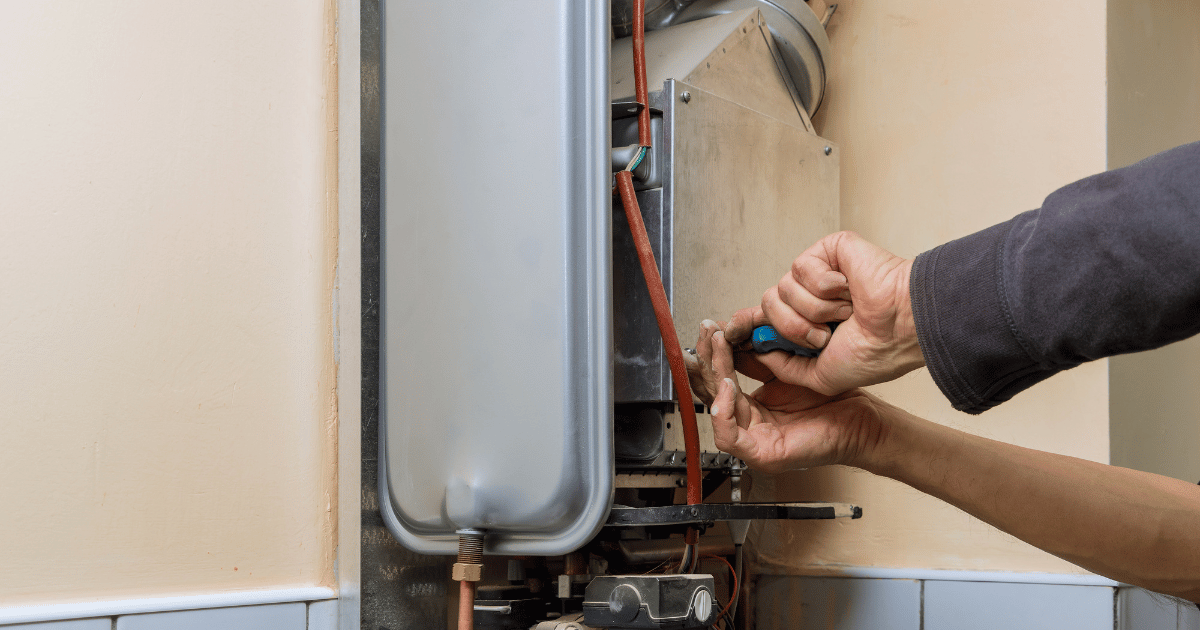Step-by-Step Steps to Maintaining Your Home's Hot Water System
Step-by-Step Steps to Maintaining Your Home's Hot Water System
Blog Article
Have you been trying to find facts concerning How to Maintain a Hot Water Heater in a Few Simple Steps?

Warm water is essential for daily comfort, whether it's for a rejuvenating shower or cleaning dishes. To guarantee your hot water system runs effectively and lasts longer, regular upkeep is key. This write-up offers useful tips and insights on just how to preserve your home's hot water system to avoid interruptions and pricey repair work.
Introduction
Preserving your home's hot water system may appear overwhelming, however with a few easy actions, you can ensure it runs smoothly for several years to find. This overview covers everything from comprehending your warm water system to do it yourself maintenance tips and understanding when to employ expert help.
Significance of Preserving Your Hot Water System
Regular upkeep not just extends the lifespan of your warm water system yet likewise guarantees it operates successfully. Ignoring maintenance can lead to lowered efficiency, greater power expenses, and even early failure of the system.
Indications Your Warm Water System Demands Maintenance
Knowing when your warm water system requires focus can protect against significant concerns. Look out for indicators such as irregular water temperature level, odd noises from the heater, or rustic water.
Comprehending Your Warm Water System
Before diving right into upkeep tasks, it's handy to recognize the basic elements of your warm water system. Commonly, this includes the water heater itself, pipes, anode poles, and temperature controls.
Month-to-month Maintenance Tasks
Normal regular monthly checks can assist capture small issues before they intensify.
Purging the Water Heater
Flushing your water heater gets rid of debris build-up, enhancing performance and lengthening its life.
Checking and Changing Anode Rods
Anode poles avoid deterioration inside the storage tank. Inspecting and changing them when worn out is crucial.
Checking and Adjusting Temperature Level Setups
Adjusting the temperature level setups makes sure optimum performance and security.
DIY Tips for Upkeep
You can do numerous upkeep jobs yourself to keep your hot water system in leading problem.
Checking for Leakages
Regularly check pipelines and links for leaks, as these can result in water damages and greater costs.
Testing Pressure Relief Valves
Checking the pressure relief valve guarantees it functions correctly and stops extreme stress accumulation.
Insulating Pipelines
Protecting warm water pipes reduces warmth loss and can save power.
When to Call a Professional
While do it yourself upkeep is helpful, some concerns call for specialist proficiency.
Facility Concerns Calling For Professional Aid
Examples include significant leaks, electrical troubles, or if your hot water heater is continually underperforming.
Routine Specialist Maintenance Perks
Professional upkeep can include extensive assessments, tune-ups, and making sure compliance with safety criteria.
Conclusion
Normal maintenance of your home's hot water system is important for efficiency, durability, and price financial savings. By complying with these ideas and understanding when to look for expert assistance, you can guarantee a trustworthy supply of warm water without unanticipated disruptions.
How to Maintain an Instant Hot Water Heater
Before tinkering with your hot water heater, make sure that it’s not powered on. You also have to turn off the main circuit breaker and shut off the main gas line to prevent accidents. Also turn off the water valves connected to your unit to prevent water from flowing into and out of the appliance. 2. When you’re done, you have to detach the purge valves’ caps. These look like the letter “T†and are situated on either side of the water valves. Doing so will release any pressure that has accumulated inside the valves while at the same time avoid hot water from shooting out and burning your skin. 3. When the purge valves’ caps are removed, you have to connect your hosing lines to the valves. Your unit should have come with three hoses but if it didn’t, you can purchase these things from any hardware or home repair shops. You can also get them from retail stores that sell water heating systems. Read the user’s manual and follow it to complete this task properly. When the hosing lines are connected, open the purge port’s valves. 4. You should never use harsh chemical cleaners or solutions when cleaning your unit. Make use of white vinegar instead. It should be undiluted and you’ll probably use about 2 gallons. 5. Now flush your water heater. This task should probably take about 40 minutes. We can’t give you specific directions for this because the procedure is carried out depending on the type, model and brand of your heater. With that being said, refer to the user’s manual. 6. When you’re done draining the unit, you have to turn off the purge port valves again. Remove the hosing lines that you earlier installed on each of the water valves. Put the valve caps (purge port) back in their respective places and be very careful so as not to damage the rubber discs that are found inside these caps. 7. Now that everything’s back in place, check your user’s manual again to find out how to reactivate your water heating system. 8. Once it is working, turn one of your hot water faucets on just to let air pass through the heater’s water supply pipes. Leave the tap on until water flows smoothly out of it. https://www.orrplumbing.com/blog/2014/september/how-to-maintain-an-instant-hot-water-heater/

Do you really like reading about How to Maintain a Hot Water Heater in a Few Simple Steps? Try to leave a remark further down. We'd be glad to see your insights about this posting. Hoping that you visit us again in the near future. Sharing is nice. Helping others is fun. Thank you for your time. Return soon.
Click Here! Report this page